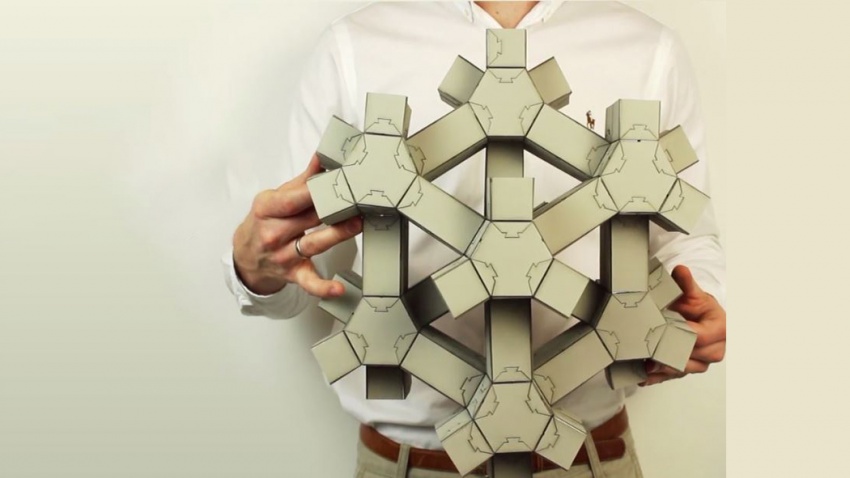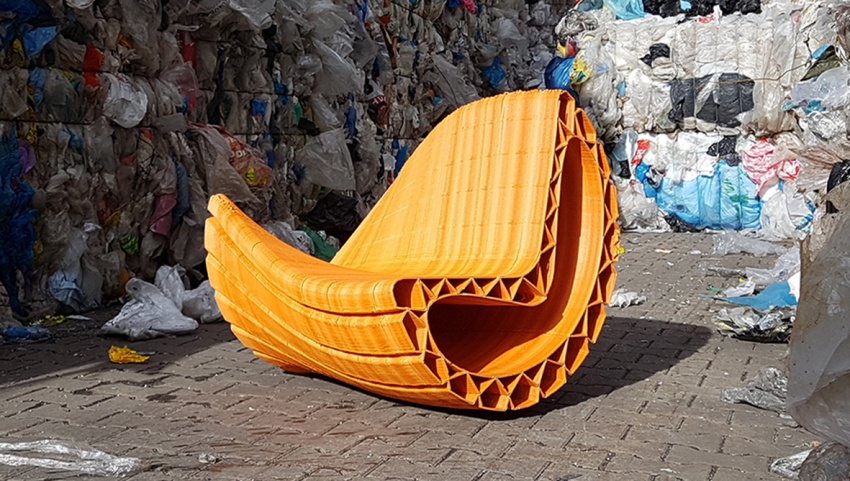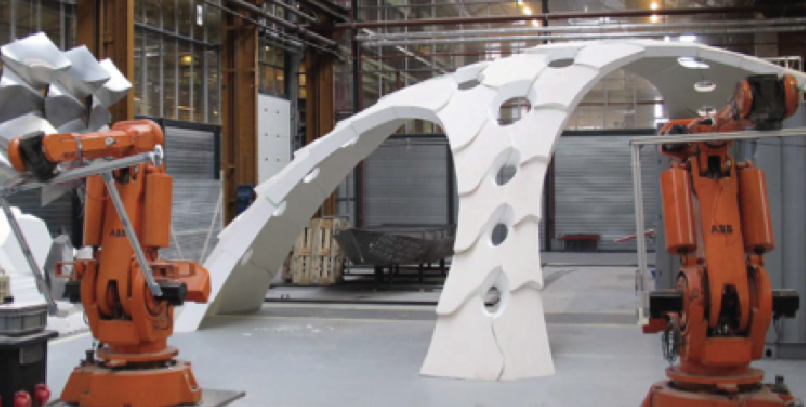Difference between revisions of "Lectures"
(→Lectures 2021) |
(→Lectures 2021) |
||
| Line 8: | Line 8: | ||
'''Introduction presentation''' | '''Introduction presentation''' | ||
<br> | <br> | ||
| − | [http://www.roboticbuilding.eu/pdf/MSc2_RB_21.pptx 12.02, 13:00h, Henriette Bier] | + | [http://www.roboticbuilding.eu/pdf/MSc2_RB_21.pptx 12.02, 13:00h, Henriette Bier] <br><br> |
'''Lecture TUD 1''' | '''Lecture TUD 1''' | ||
<br> | <br> | ||
Revision as of 16:39, 12 February 2021
Lectures 2021
(Accessible via Zoom: https://tudelft.zoom.us/j/95322007795?pwd=MDBNKzVNUmp6OHJkNjI2cUVhZlVsQT09)
Introduction presentation
12.02, 13:00h, Henriette Bier
Lecture TUD 1
17.02, 13:00h: Robert Lindner, ESA on Life support Systems and In-Situ Resource Utilisation for off-Earth structures
Lecture TUD 2
19.02, 13:00h: Volker Ruitinga, Vertico on Challenges of 3D Printing Large-scale Structures
Lecture TUD 3
24.02, 13:00h: Hamed Alavi, UniFri on Sensor-actuators and Human-Computer Interaction for Intelligent Distributed Systems
Lectures 2017
LECTURE 1.0 | INTERACTIVE ARCHITECTURE | TUESDAY, OCTOBER 10th | 10:00 HRS | PROTOSPACE
Rational design of reconfigurable prismatic architected materials | Johannes T.B. Overvelde
Advances in fabrication technologies are enabling the production of architected materials with unprecedented properties. While most of these materials are characterized by a fixed geometry, an intriguing avenue is to incorporate internal mechanisms capable of reconfiguring their spatial architecture, therefore enabling tunable functionality. Inspired by the structural diversity and foldability of the prismatic geometries that can be constructed using the snapology origami-technique, here we introduce a robust design strategy based on space-filling polyhedra to create 3D reconfigurable materials comprising a periodic assembly of rigid plates and elastic hinges.
Guided by numerical analysis and physical prototypes, we systematically explore the mobility of the designed structures and identify a wide range of qualitatively different deformations and internal rearrangements. Given that the underlying principles are scale-independent, our strategy can be applied to design the next generation of reconfigurable structures and materials, ranging from transformable meter-scale architectures to nanoscale tunable photonic systems.
LECTURE 2.0 | THEORY & PRACTICE | FRIDAY, OCTOBER 27th | 10:00 HRS | PROTOSPACE
Design for Spatial User Interaction | Milica Pavlovic
LECTURE 3.0 | RESEARCH & PRACTICE | TUESDAY, NOVEMBER 14th | 10:00 HRS | PROTOSPACE
3D Printing in the Circular City | Foteini Setaki
Plastic waste has a huge impact on the environment, causing pollution and greenhouse gas emissions that contribute to climate change.
The project 3D Printing in the Circular City investigates an innovative way for recycling household plastic waste locally with large scale 3D-printing, in the city of Amsterdam. Recycling of plastic waste is considered here as an environmental alternative for solving the problem of disposal and, at the same time, for the cost-effective use of recycled building component in the urban context. The project explores the full process “from waste to product”. Local plastic waste streams are examined to define their utilization patterns and recycling potential. A selection of materials are tested and assessed with regard to their printability and mechanical properties. The first results are demonstrated in a 1:1 scale prototype of a bench from recycled PP; which show good potential for the use of recycled plastic in large scale 3d printing and for the reduction of municipal waste volume in combination with scale-up strategies.
A multidisciplinary consortium, consisting of TU Delft, DUS architects, The New Raw, AMS Institute and AEB Amsterdam, combine their expertise in this project.
LECTURE 4.0 | BUILT ENVIRONMENT | TUESDAY, NOVEMBER 14th | 10:00 HRS | PROTOSPACE
Exploring the Industrial Ramifications of Architectural Robotics | Jelle Feringa
The research ofJelle Feringa (Aectual, former Odico) is focused on the development of original robotic fabrication processes for architecture, considering materialisation an inherent aspect of architectural design. At Odico the technology Jelle developed as a PhD researcher are deployed at an industrial scale.
Does the emerging discipline of architectural robotics present an umbilical cord to the good ol' days of Late Modernism? Is it a nostalgia for a vitality in architecture long lost, or the coming about of an architectural practice that is supply rather than demand driven? Do robotics allow to bridge the vitality in the ‘field’ of architecture with the stasis in the ‘discipline’ of architectural practice?
Robotic Building Symposium | with Guests from Bartlett University College London | FALL 2017 | D2RP&O | DESIGN TO ROBOTIC PRODUCTION & OPERATION
On Wednesday November 22 a Robotic Building symposium will be hosted at Protospace, at the Faculty of Architecture. It is organized in cooperation with students from the Bartlett University College of London.
The RB symposium with invited guest from UCL will address the use of computational design and robotic manufacturing techniques to allow architects to regain control over the design implementation and allow end-users to participate as co-creators in the design and in the adaptation/customisation of their environments over time.
Henriette Bier: Intro
Henriette Bier: Robotic Building as Design-to-Robotic-Production-Assembly and –Operation
Sina Mostafavi: Multimode Informed Robotic Materialisation
Benjamin Kemper: Repurpose of Abandoned Drilling Rigs Using Advanced Computational Design and Robotic Manufacturing
Mollie Claypool: Towards a Wholly Digital Architecture
Jeroen van Ameijde: Emergent Constructions
Daniel Grenz, et al.: Disruptive Architectures
Date: November 22nd, 10:00
Location: Delft University of Technology Faculty of Architecture, Protospace (Room BG.200.West) Julianalaan 134 Delft




